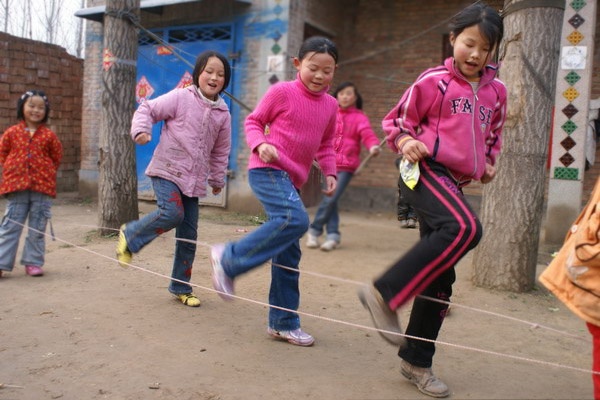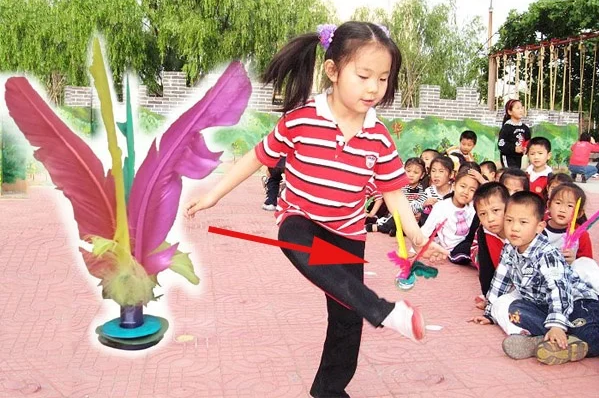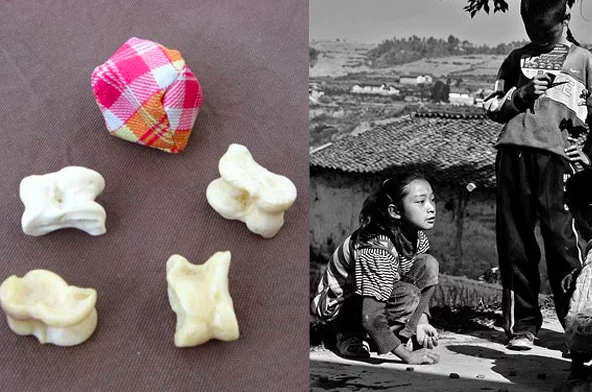The beginning of March marks yet another month spent in possible quarantine. For the families who have decided to stay in Beijing, thinking of creative new ways to educate and entertain the kids is starting to become challenging.
I’m one for nostalgia. The games of my childhood always bring back fond memories of carefree afternoons spent outside with my cousins and friends. While in the US we grew up on games like Twister and Monopoly, the games of my childhood in China were much more different.

跳皮筋 (Tiào Pí Jīn) Chinese Jump Rope
The Chinese version is a bit different than the American version. First of all, the Chinese version uses a giant stretched out rubber band rather than a rope. The band is looped around two people (or two stationary objects).
Unlike Western jump rope, the object of this game is to hook your legs into the rope to form loops and patterns in a certain sequence. This is often accompanied by a rhyme or song. As each level is completed, the rope is moved higher, making the patterns more difficult to complete.
Here’s how to play.

毽子 (Jiàn Zi) Shuttlecock
While the term “shuttlecock” usually refers to the ball in badminton, here it refers to this feather-covered toy. The shuttlecock is essentially a weighted hacky sack that’s passed from foot to foot by kicking. The object of the game is to keep it from touching the ground. Besides being played in the schoolyard, it is also very popular among senior citizens as a way to stay active.

抓拐 (Zhuā GuǎI) Knucklebones
The first time I tried explaining this to a friend from the UK he was convinced I was making it up, but this game goes back far past my childhood. It’s a game that my parents remember playing when they were in diapers. This is a game very similar to “jacks” in Western culture. “拐” refers to a piece of bone, usually taken from the thigh joint of a sheep or pig, which were often saved from dinner tables.
Just like jacks, a ball or tiny beanbag is tossed up during play. The rules vary, but one of the main objectives is to “turn” all four bones right side up before you catch the beanbag.
Here’s how to play.
Source: tutorming.com, itsmichelleteacher.wordpress.com, teachhealthk-12.uthscsa.edu
Photos: itsmichelleteacher.wordpress.com, teachhealthk-12.uthscsa.edu, Unsplash, Fladybladeblog.files.wordpress.com




